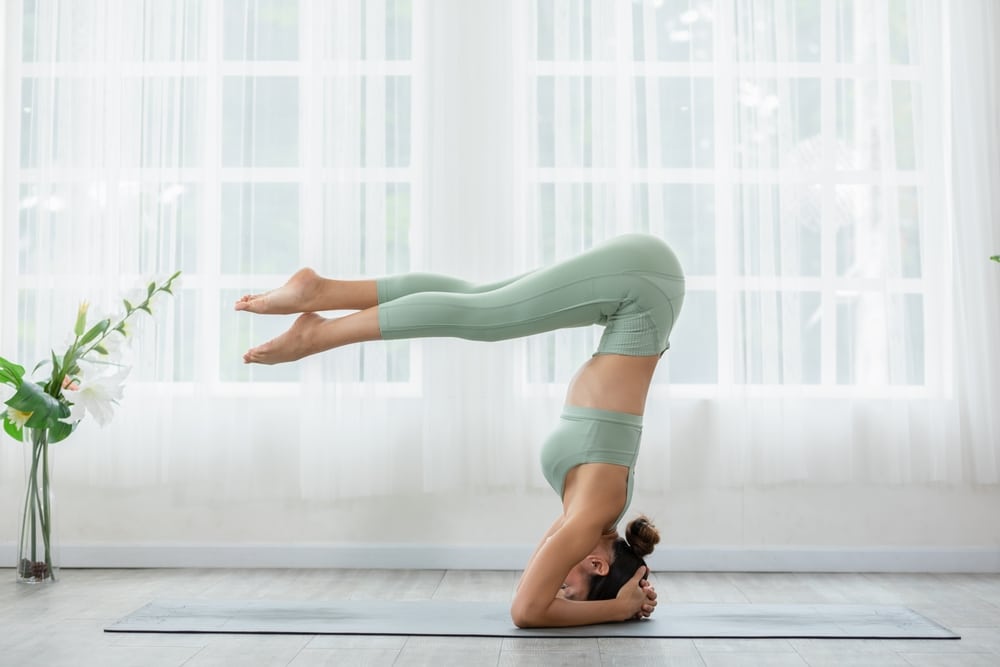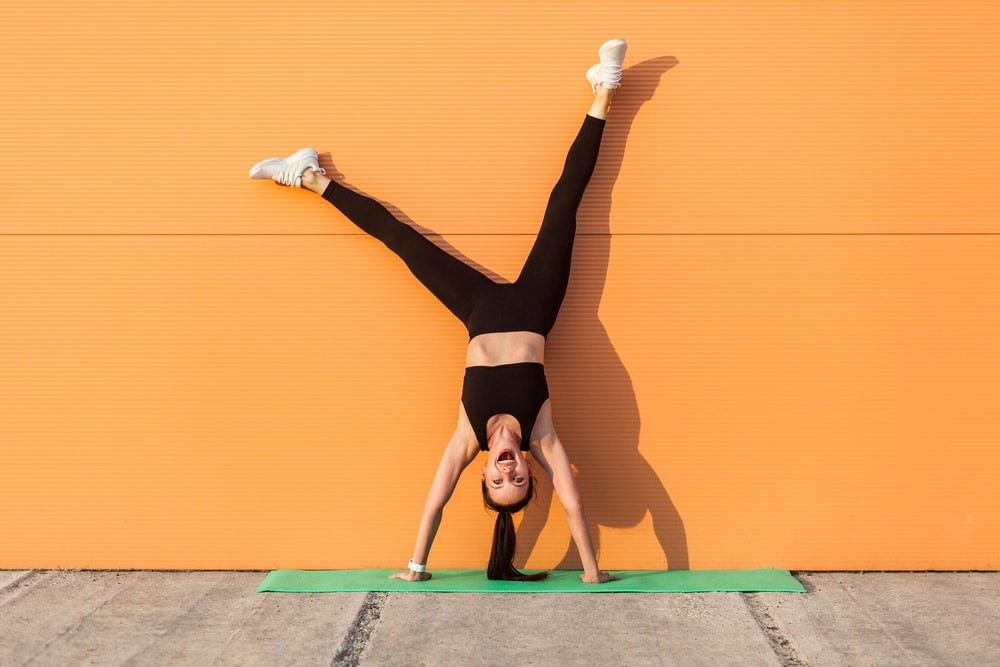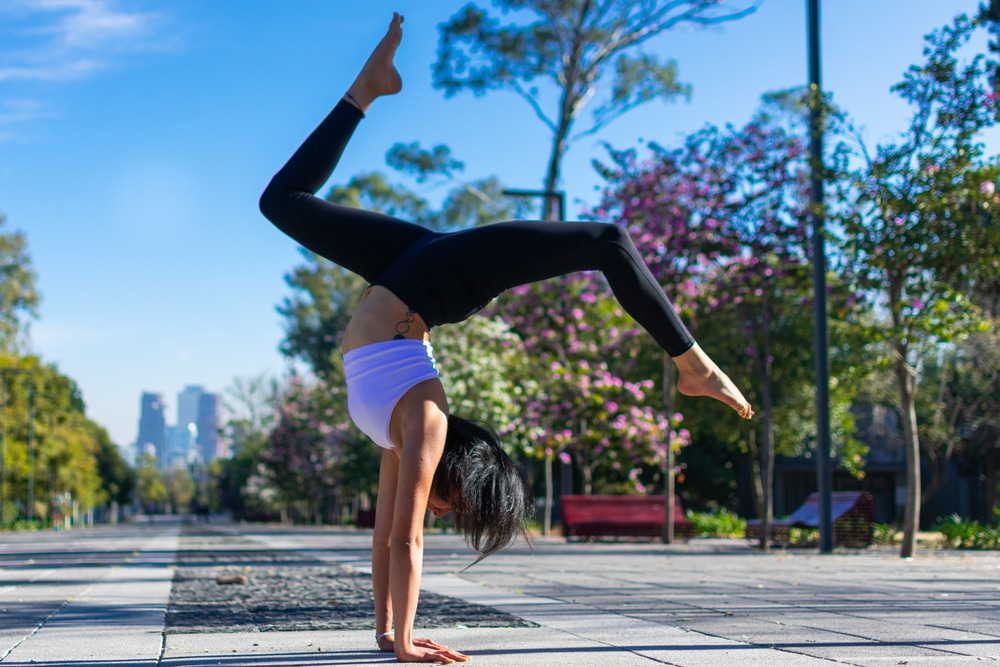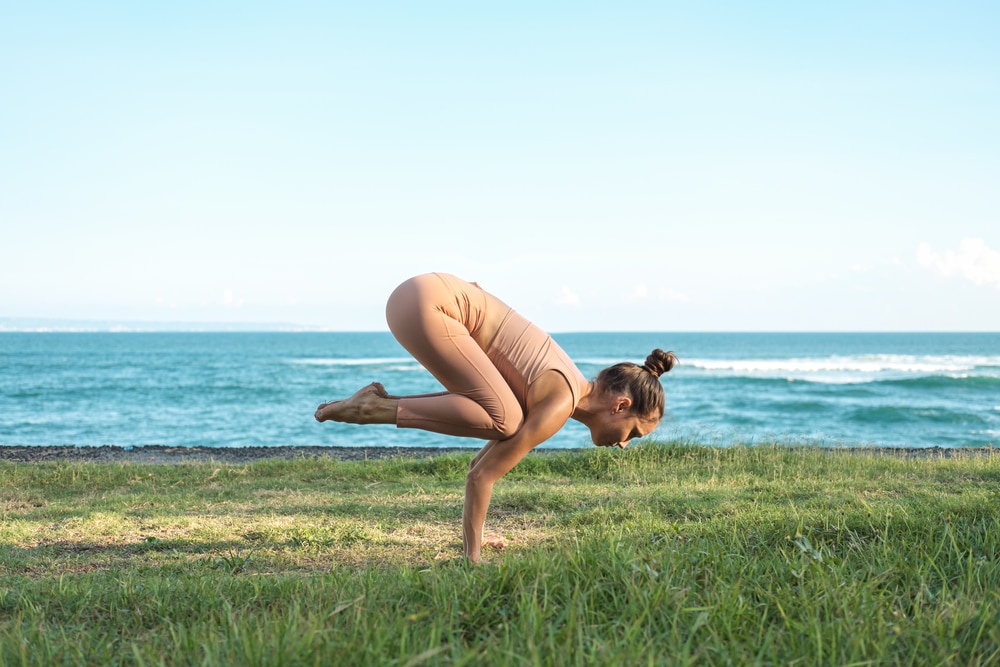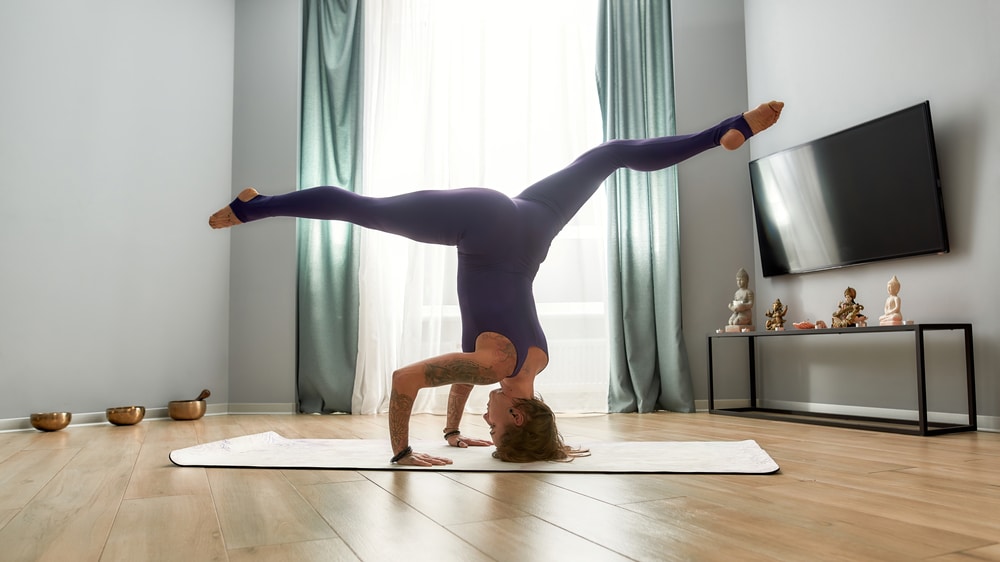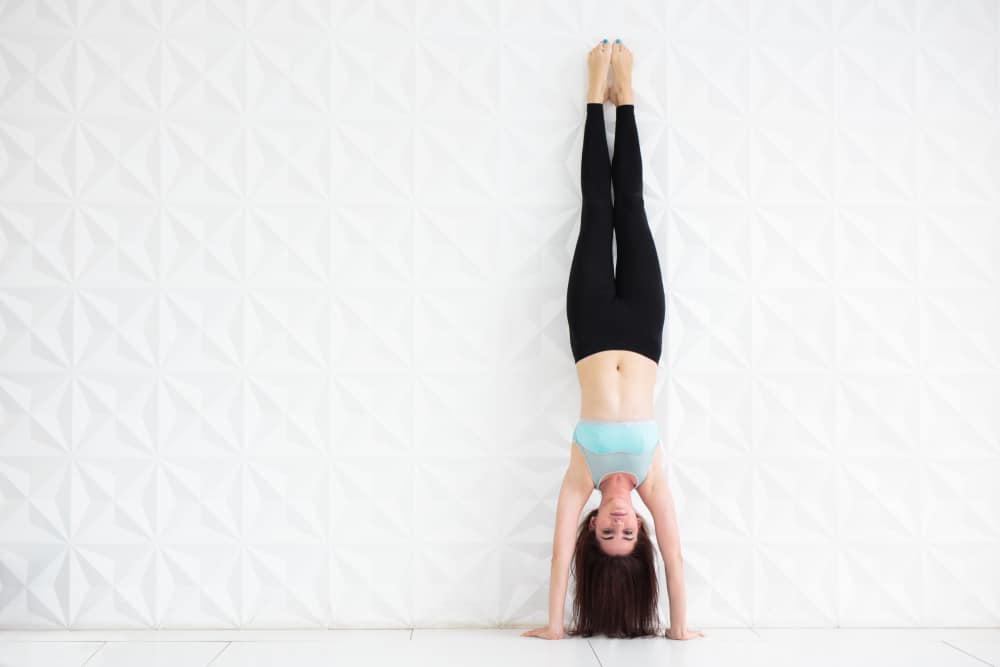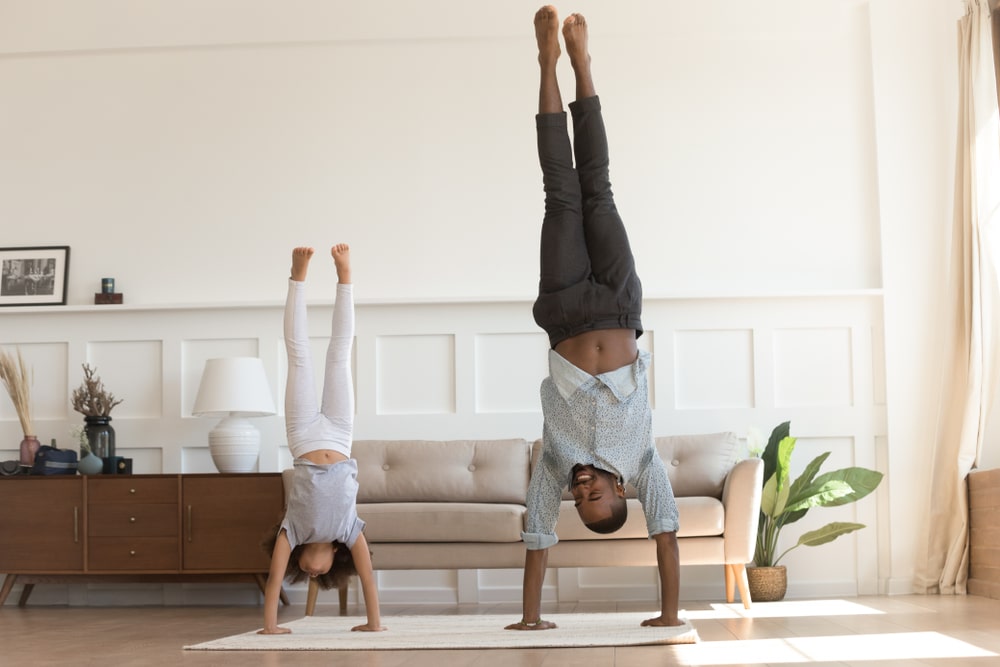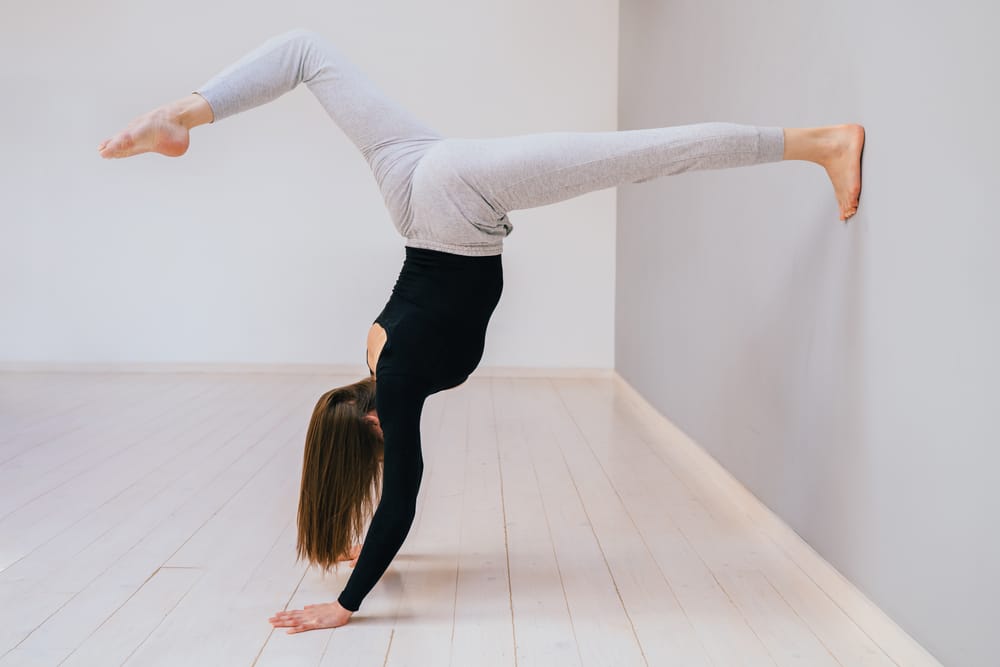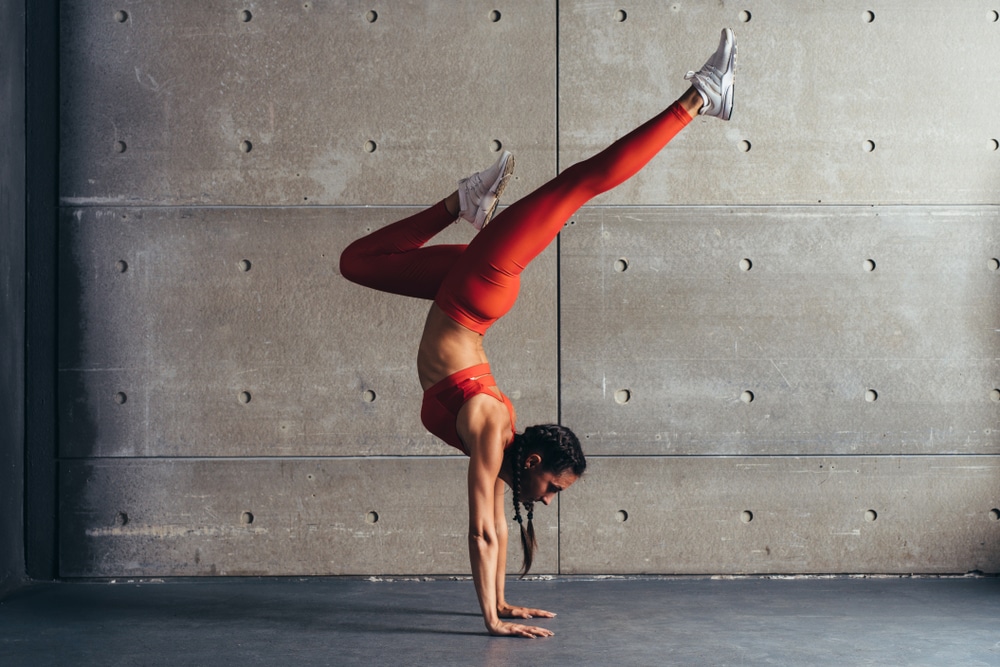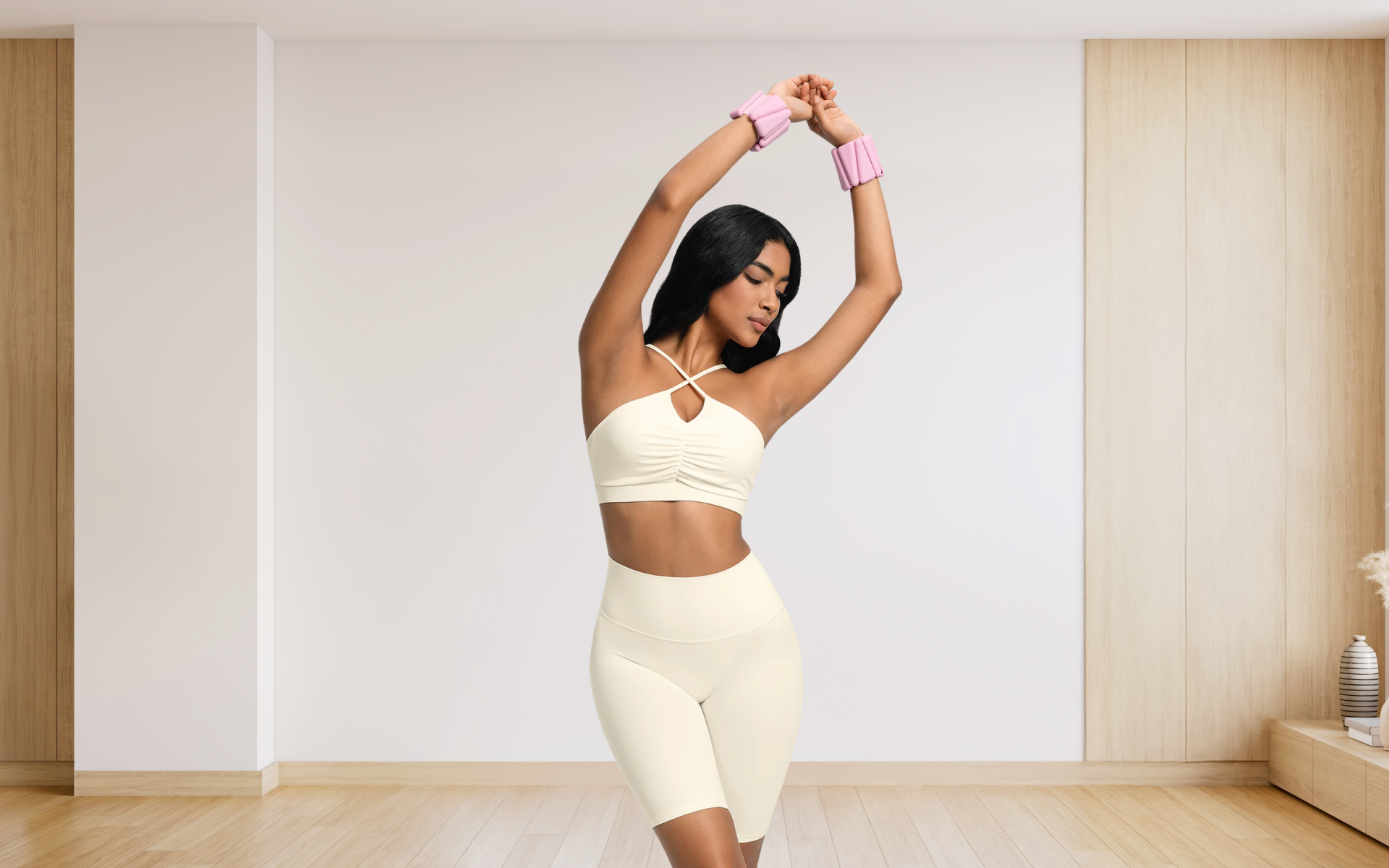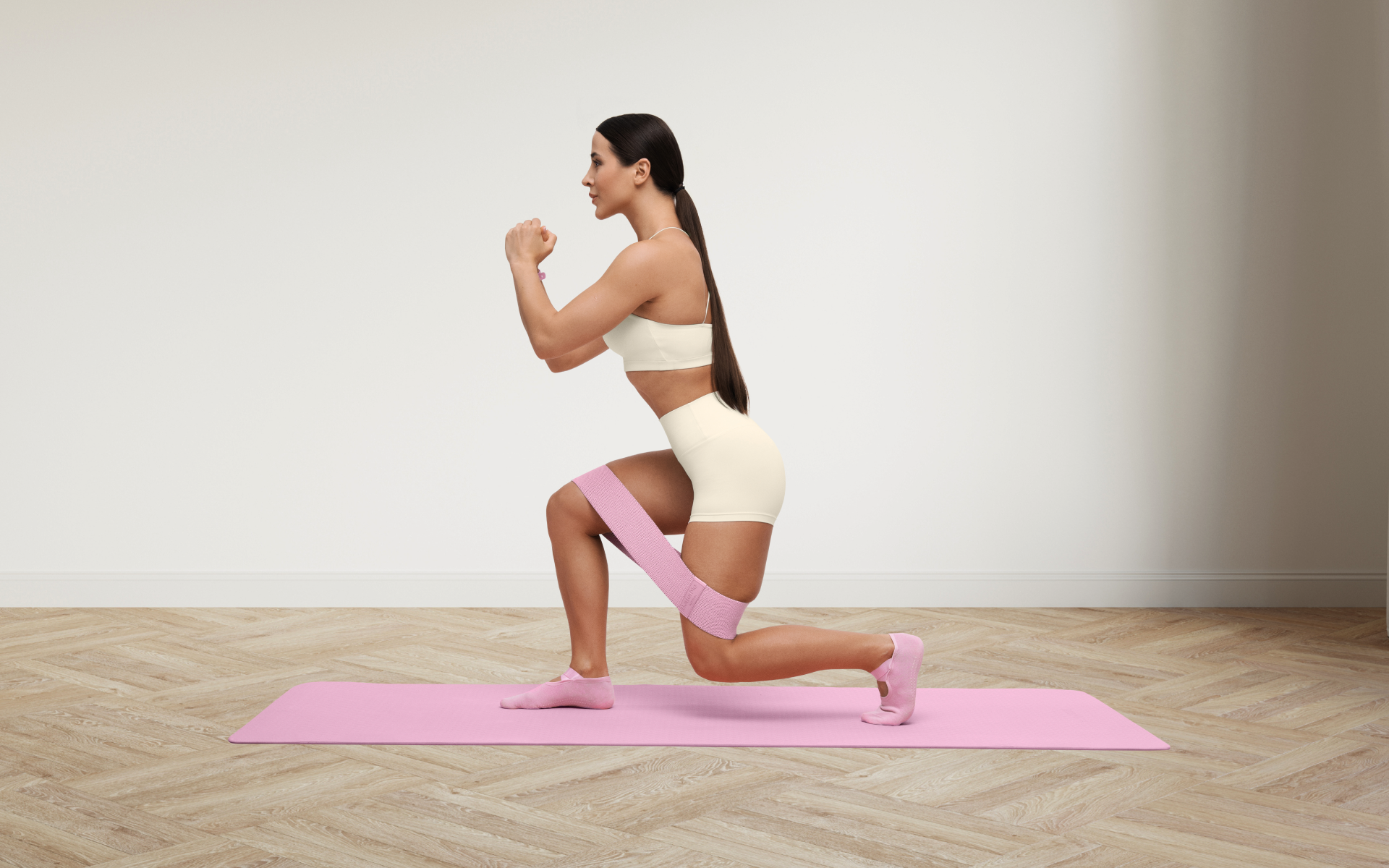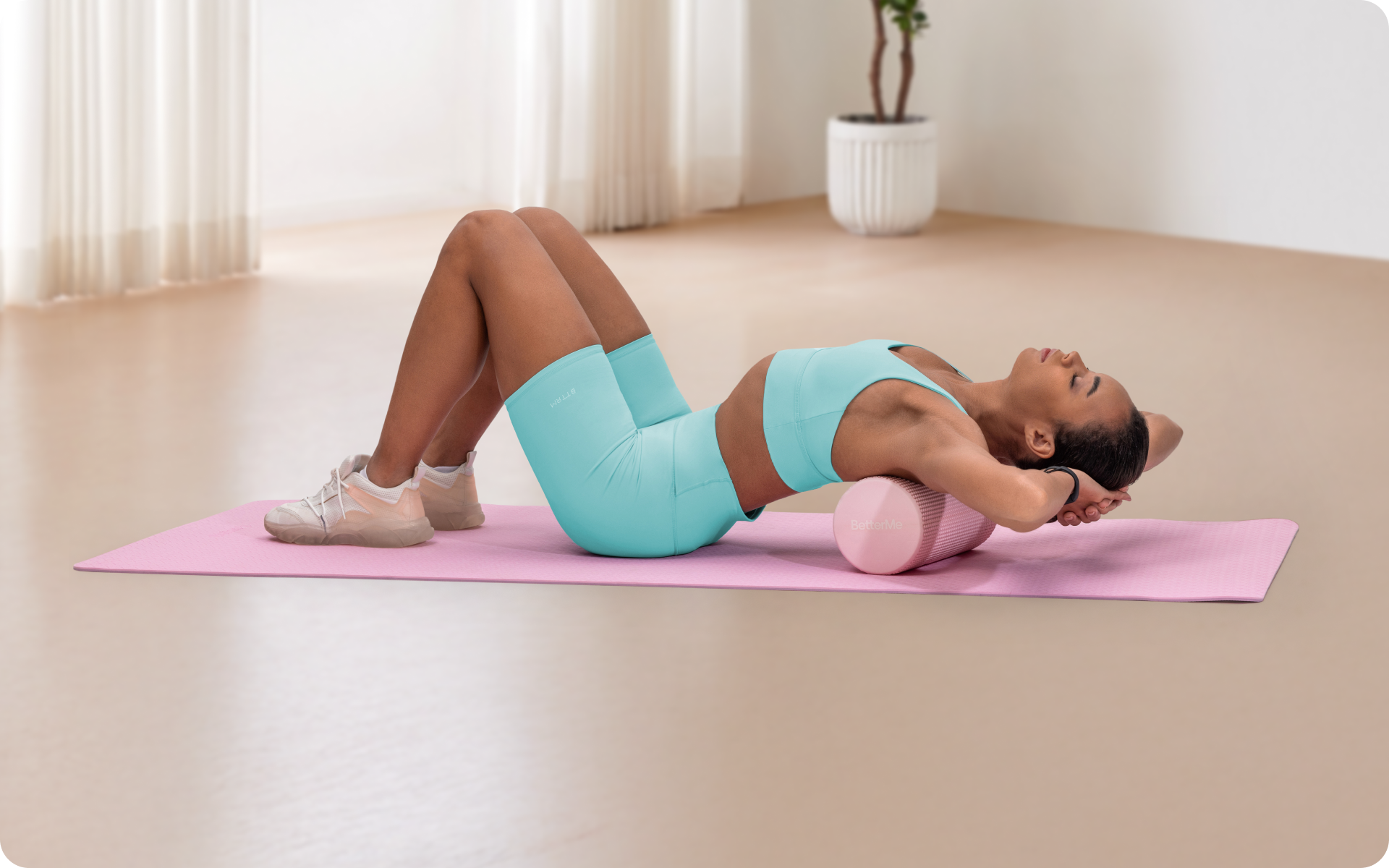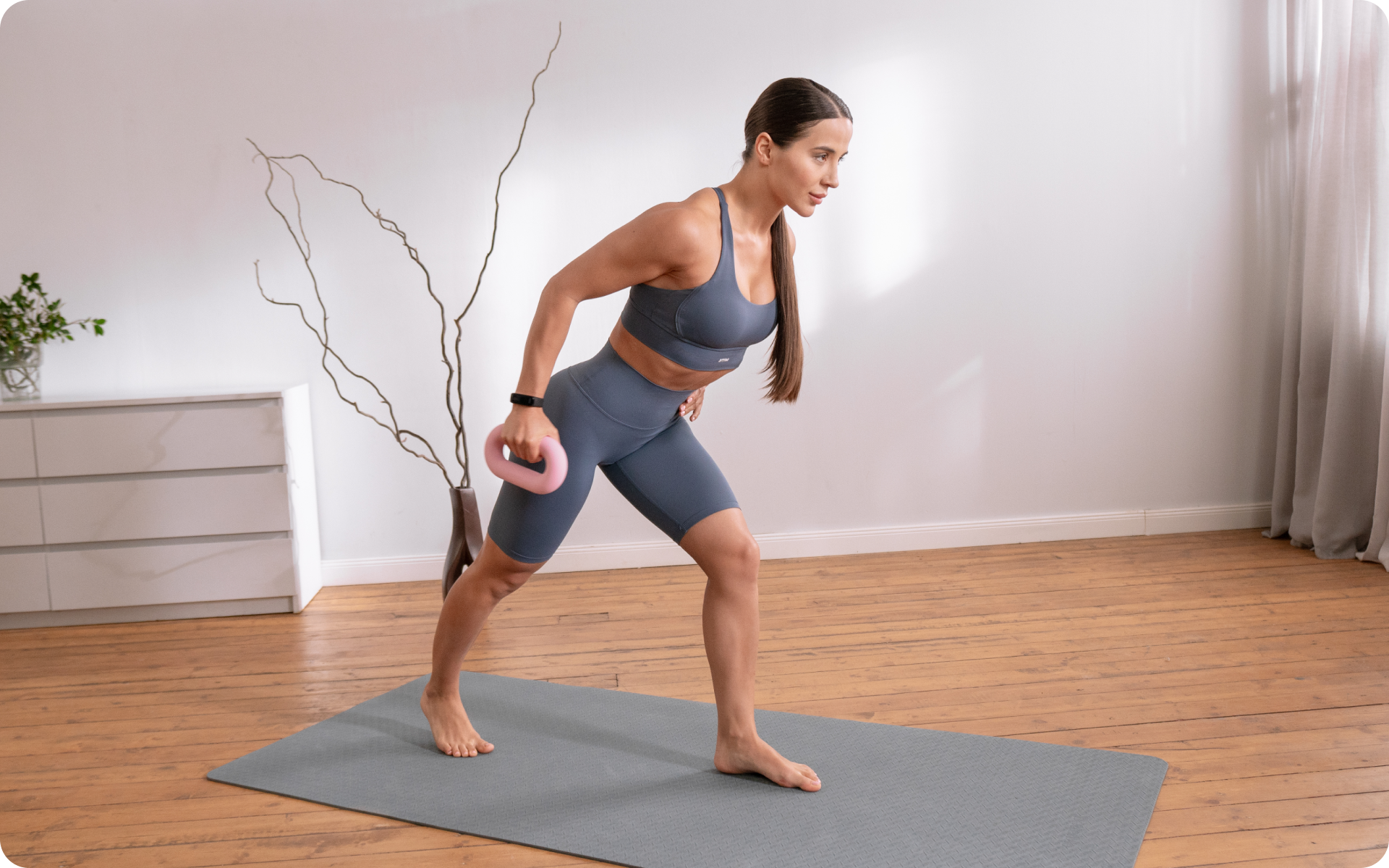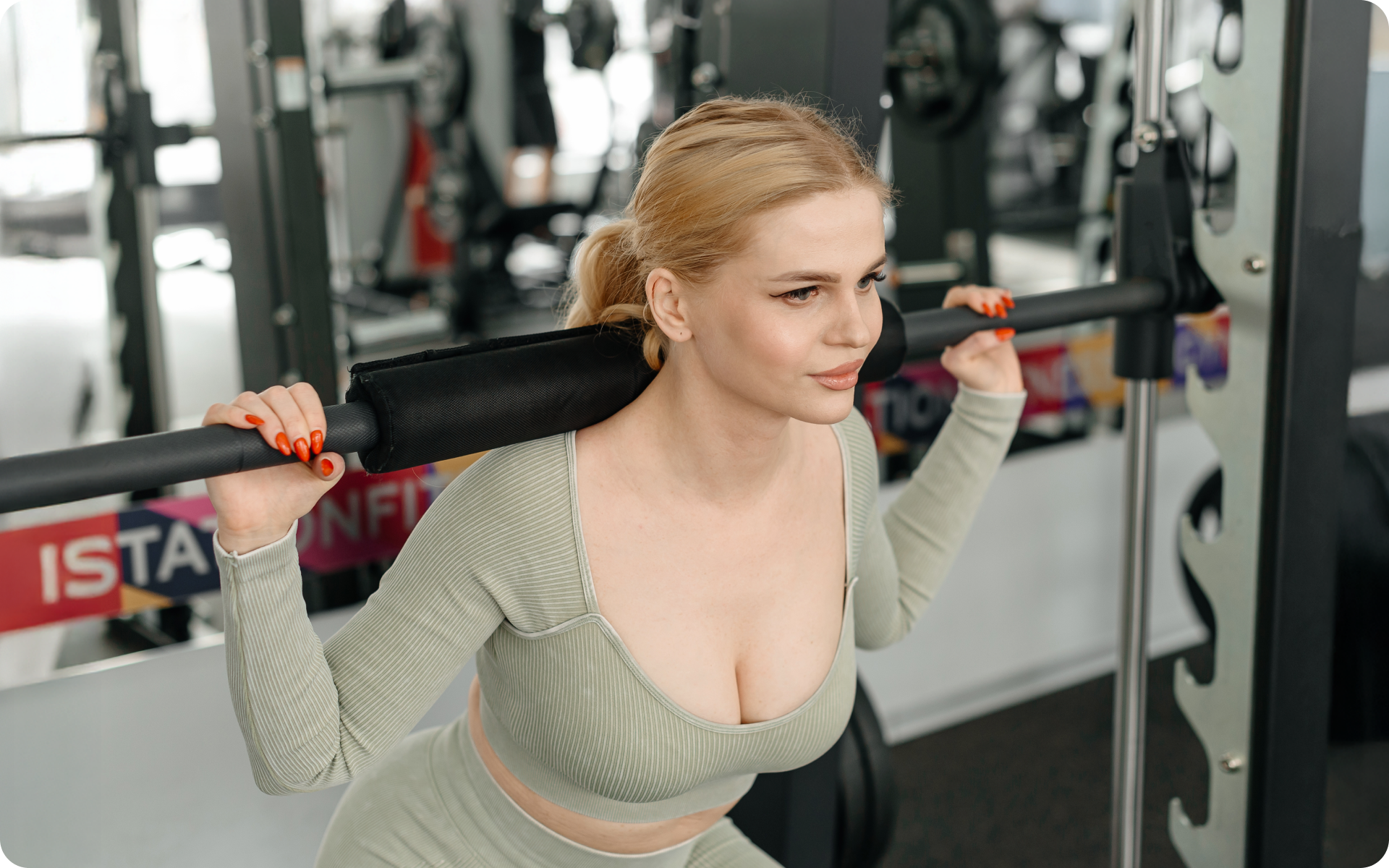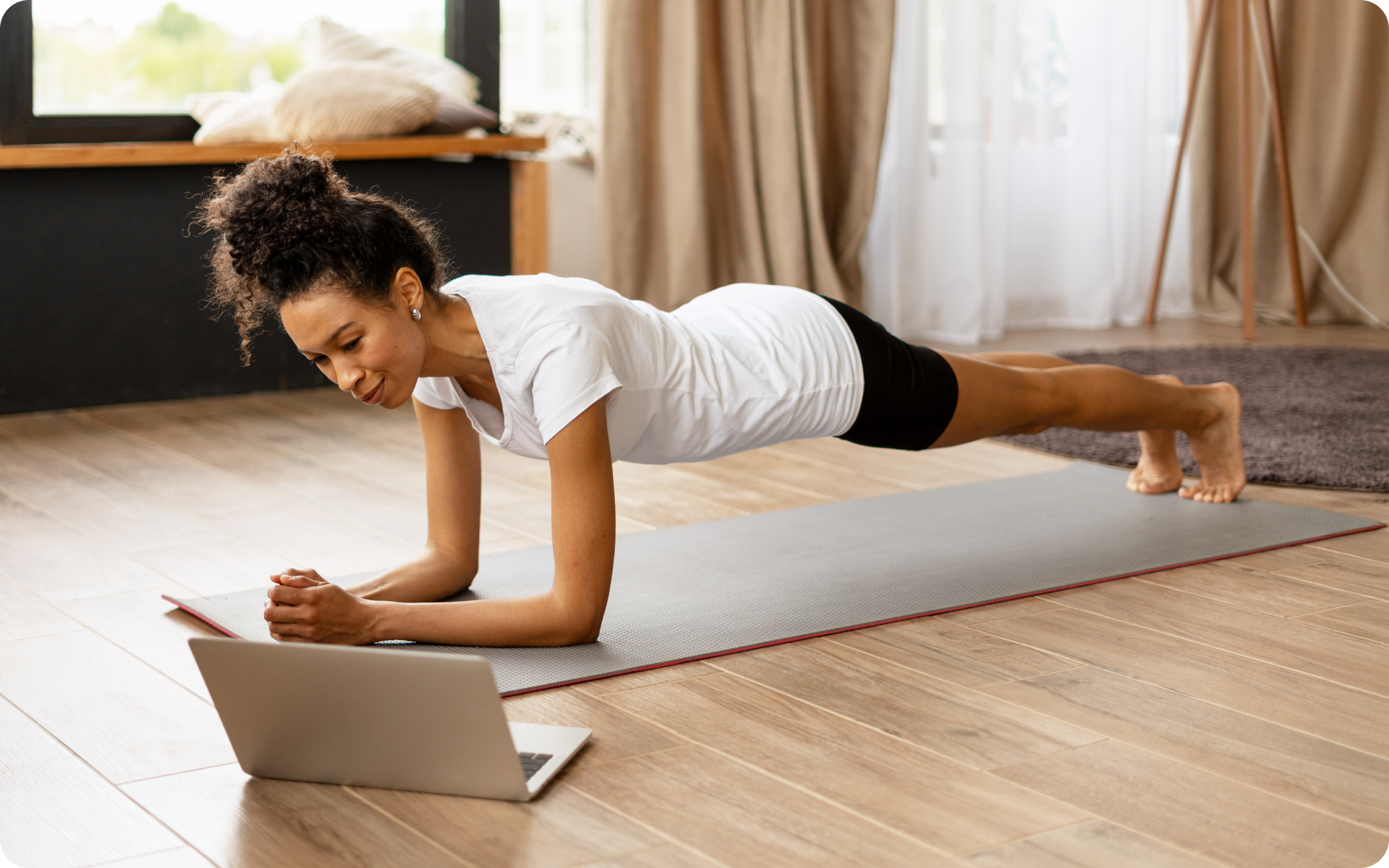To the average person, a handstand almost seems like an impossible feat. Imagine being able to balance your entire body weight on your hands for an extended period of time. This sounds like a circus act or something that only gymnasts can do. But the truth is, handstands don’t have to be as difficult as they seem. With a little bit of practice, most anyone can learn how to hold a handstand. In addition, the practice of doing regular handstands offers a number of benefits that make them well worth the effort. Like most exercises, this whole body activity also comes with a few potential drawbacks. In this article, we’ll dive into the benefits, drawbacks, and progression of handstands.
Get your personalized
meal plan!
Benefits Of Handstands
There are many benefits to be gained from practicing handstands, including:
They Strengthen Your Upper Body
When you think of upper body exercises, you probably think of things like push-ups and pull-ups. While these are more common exercises, handstands offer a unique challenge that can help you build strength in your upper body.
When you’re in a handstand, your entire body weight is resting on your hands and arms. This requires tremendous strength and stability in your shoulders, triceps, and forearms.
As you practice handstands, you’ll gradually build strength in these muscles, making you more resilient to injuries and allowing you to lift heavier weights.
Why does upper body strength matter? Well, strong arms and shoulders are necessary for daily activities like carrying groceries or opening a heavy door. They’re also key for more challenging tasks like rock climbing or pull-ups.
They Improve Your Balance And Coordination
One of the main benefits of handstands is that they improve your balance and coordination. When you’re inverted and relying on just your hands and arms to support your weight, even the slightest imbalance can cause you to fall.
As you practice handstands, you’ll gradually improve your balance and coordination. This is important because good balance and coordination are essential for activities like skiing, biking, and surfing. They also help you stay safe when walking on icy or uneven terrain.
As you age, having great balance and coordination becomes increasingly important. One fall can easily become a serious injury, so it’s important to do whatever you can to prevent this.
Read More: Firefighter Fitness Program: Everything You Need To Know
They Help You Stay Flexible
Another benefit of handstands is that they help you stay limber. When you’re inverted, your body is in a stretched position. This helps to elongate your muscles and increase your range of motion (8).
As you get older, it becomes increasingly important to maintain good flexibility. Stiff muscles can lead to pain and injuries, this means it’s important to do whatever you can to stay flexible (1). Handstands are a great way to do this.
They Improve Your Digestion
Inversion therapy, which is the practice of being upside down or inverting your body, has been shown to improve digestion. When you’re inverted, the blood flow to your digestive system is increased. This helps to improve your gut health and digestion (5).
While there haven’t been many studies on the benefits of handstands for digestion, it’s likely that they offer similar benefits. If you’re struggling with gut health issues, practicing handstands may help to improve your digestion.
They Help Relieve Stress
Inversion therapy has also been shown to help relieve stress. When you’re inverted, the blood flow to your head is increased. This helps to improve your mood and reduce stress levels (8).
If you’re feeling stressed, try spending a few minutes in a handstand. You may be surprised at how much it helps to reduce your stress levels.
They Build Core Strength
Your core is responsible for providing strength and stability for your entire body. It encompasses the muscles in your abdomen, lower back, and hips. When you’re in a handstand, your core is responsible for keeping you upright and stable.
As you practice handstands, you’ll gradually build strength in your core muscles. This exercise specifically targets your transverse abdominis, which is the deep muscle that wraps around your waist. This muscle is key for providing core stability and preventing injuries (3).
It also targets your rectus abdominis, which is the muscle that gives you a “six-pack”.
A strong core is important for everyday activities like carrying groceries or walking up stairs. It’s also key for more challenging tasks like running and lifting weights. Most importantly, a strong core helps to protect your back from injury and allows you to lift heavier weights (3).
They Stimulate The Endocrine System
The endocrine system is responsible for producing hormones in the body. These hormones regulate everything from metabolism to growth and development (4). When you’re inverted, the endocrine system is stimulated and hormones are released.
One of the glands that is stimulated by inversion is the pituitary gland. This gland is responsible for producing growth hormones, which are essential for growth and development (4). Inversion has been shown to increase levels of growth hormones in the body.
The benefits of increased growth hormone levels includes improved muscle mass, decreased body fat, and improved bone density (4).
The thyroid gland is also stimulated by inversion. This gland is responsible for regulating metabolism. Increased blood flow to the thyroid gland helps to improve its function and can lead to increased metabolism (4).
Finally, increased blood flow to the head can stimulate your adrenal glands to release less cortisol. Cortisol is a stress hormone that can have negative effects on the body. These effects include weight gain, muscle loss, and poor sleep (6).
By reducing cortisol levels, inversion helps to protect your body from the negative effects of stress.
Want to build an attention-grabbing bubble butt, blast away fat that’s stored in all the wrong places, spring-clean your diet, turn back the clock on your skin, skyrocket your self-confidence and shatter your insecurities? Check out the BetterMe app and set this plan in motion!
They Improve Blood Circulation
Inversion therapy has been shown to improve blood circulation throughout the body. When you’re inverted, the blood flow to your head is increased. This helps to improve the function of your brain and organs (8).
Inversion has also been shown to improve blood circulation to the rest of your body. This helps to improve the function of your other organs and can help to prevent diseases (8).
They Improve Cardiovascular Health
Inversion therapy has also been shown to improve cardiovascular health. When you’re inverted, the blood flow to your heart is increased. This helps to improve the function of your heart and can prevent diseases (2).
Inversion has also been shown to improve the oxygenation of your blood. This helps to improve the function of your heart and can prevent diseases (8).
They’re Fun And Challenging
Handstands are a fun and challenging exercise that can help improve your fitness level.
When you first start practicing them, you’ll probably find that you can only hold a handstand for a few seconds. But as you practice, you’ll gradually be able to hold them for longer periods of time.
You may never be able to do a perfect handstand, but that’s okay. The challenge is part of the fun. As you keep practicing, you should gradually get better and better.
Drawbacks Of Handstands
Despite being extremely beneficial, there are a few drawbacks to handstands that you should be aware of.
They Can Be Dangerous
Handstands can be dangerous if they’re not done correctly. If you lose your balance, you could fall and hurt yourself.
That’s why it’s important to practice them in a safe environment and to have someone nearby to spot you. It’s also important to listen to your body and stop if you start to feel pain.
They Can Cause Joint Pain
If you have any pre-existing joint problems, handstands can make them worse. That’s because the added pressure on your joints can aggravate your symptoms.
If you have joint pain, it’s important to talk to your doctor before trying handstands. They may be able to give you some specific exercises that will help strengthen your joints and prevent further damage.
They Can Cause Muscle Soreness
Handstands can also cause muscle soreness. This is because they’re a challenging exercise and your muscles aren’t used to the strain.
The good news is that this muscle soreness usually goes away after a few days. But if it persists, it’s a sign that you’re overdoing it and should take a break from handstands.
Read More: Nordic Walking Benefits: 10 Plus Reasons To Try This New Fitness Trend
How To Do A Handstand
Now that you know the benefits and drawbacks of handstands, let’s learn how to do them.
- Start by finding a safe place next to a wall to practice.
- Place your hands on the ground shoulder-width apart, facing away from the wall.
- Spread your fingers and point your toes.
- Tighten your core muscles and lift your feet off the ground and onto the wall.
- Slowly walk your feet up the wall until your body is in a straight line from your head to your heels.
- Hold this position for as long as you can.
- To come out of the handstand, slowly walk your feet back down the wall.
- Rest for a few seconds and then repeat.
Handstand Variations To Switch Up Your Routine
Other than the traditional handstand, there are a few variations that you can try. These variations will help to challenge your muscles in different ways and can keep your handstand practice interesting.
One-Legged Downward Dog
This is a great variation for beginners. To do it:
- Start in a downward dog position with your feet hip-width apart and your hands shoulder-width apart.
- Lift one leg into the air and hold it there. You can keep your leg straight or bend your knee. Hold this position for as long as you can and then switch legs.
Side Handstand
This variation is good for working on your balance. To do it:
- Start in a traditional handstand position with your feet against the wall and your hands shoulder-width apart.
- Slowly walk your feet up the wall until they’re higher than your hips. When you reach this point, shift your weight over to one side and hold the position for as long as you can.
- Switch sides.
Handstand Progression
If you’re new to handstands, it’s important to start slowly and progress gradually. Here are a few tips for progressing safely:
- Practice against a wall. This will help you to get used to the feeling of being upside down and will give you something to catch you if you lose your balance.
- Use a spotter. A spotter is someone who stands next to you and helps you to stay balanced. This is especially helpful when you’re starting out.
- Build up your strength and flexibility. Before trying a handstand, make sure that you have the strength and flexibility to do them safely. Try some basic exercises like squats and lunges to improve your strength and hamstring stretches to improve your flexibility.
- Take your time. Don’t try to rush into handstands. It takes time to build up the strength and skills necessary to do them correctly.
- Listen to your body. If you start to feel pain, take a break. It’s important to rest and allow your body to recover if you want to avoid injury.
Common Handstand Problems And How To Fix Them
There are a number of reasons why you may be unable to do a handstand. Here are some of the most common problems and how to fix them:
Limited Overhead Soft Tissue Mobility
Soft tissue is the tissue that connects your muscles to your bones. If this tissue is tight, it can limit your range of motion and make it difficult to do a handstand. Lack of mobility is often caused by underuse or overuse of the muscles (9).
To fix this problem, you need to improve your mobility.
Try doing some overhead stretches like the shoulder press. This stretch will help to loosen the soft tissue in your shoulders and improve your range of motion.
Dynamic stretching may also help. This type of stretching involves moving your joints through their full range of motion. Try doing some lunges and squats to improve your flexibility and range of motion.
When it comes to weight loss, progress is made by inches, not miles, so it’s much harder to track and a lot easier to give up. BetterMe app is your personal trainer, nutritionist and support system all in one. Start using our app to stay on track and hold yourself accountable!
Limited Thoracic Spine Mobility
The thoracic spine needs to extend fully in order to do a handstand. If it doesn’t extend fully, you will be unable to hold the position. Limited thoracic spine mobility may be caused by poor posture, overuse of the muscles, or injury (7).
To fix this problem, you need to improve your thoracic spine mobility.
One way to do this is by doing breathing drills. The ribs attach to the thoracic spine, so breathing drills will help to loosen the muscles and improve your range of motion (7).
Another way to improve your thoracic spine mobility is by doing foam rolling. Foam rolling is a type of self-massage that helps to loosen the muscles and increase flexibility.
Finally, some dynamic stretches that target the thoracic spine can also help. Try doing some side bends and twists to loosen the muscles and improve your range of motion.
Limited Wrist Extension Mobility
Your wrists play an important role in a handstand. They need to be able to extend fully in order to support your body weight. Limited wrist extension mobility may be caused by injury, poor posture, or overuse of the muscles.
To fix this problem, you need to improve your wrist extension mobility.
One way to improve your wrist extension mobility is by doing some stretches. Try holding your hands in front of you with your palms facing up. Then, use your other hand to gently push your palms down until you feel a stretch in your wrists.
You can also try doing some wrist strengthening exercises. These exercises will help to strengthen the muscles and improve your range of motion.
Finally, you can try doing some dynamic stretches that target the wrists. Try doing some arm circles or windmills to loosen the muscles and improve your range of motion.
Poor Upper Back And Deltoid Strength
Your upper back and deltoids play an important role in a handstand. Your deltoids are the muscles that rotate your shoulder, and your upper back is responsible for extending your thoracic spine. If these muscles are weak, you will not be able to hold a handstand for very long.
Poor upper back and deltoid strength may be caused by the underuse of the muscles or poor posture. To fix this problem, you need to improve your upper back and deltoid strength.
One way to improve your upper back and deltoid strength is by doing some exercises. Try doing some shoulder presses or reverse flys to strengthen these muscles.
You can also try doing some dynamic stretches that target the upper back and deltoids. Try doing some push-ups or jumping jacks to increase your strength and flexibility.
Poor Core Strength And Control
Your core is responsible for keeping your body stable during a handstand. If your core is weak, you will not be able to hold the position for very long.
Poor core strength and control may be caused by the underuse of the muscles or poor posture. To fix this problem, you need to improve your core strength and control.
One way to do this is by doing more core exercises. Choose loaded movements like farmer carries that require you to brace your core to maintain good form.
Another way to improve your core strength and control is by improving your posture. Good posture requires you to engage your core muscles, so try to sit up tall or stand up straight whenever you can.
Hip Extension Limitations
Although not as limiting as the previous factors, hip extension limitations can still be a hindrance to progressing in handstands. If you cannot extend your hips fully, you will not be able to hold the position as easily.
Hip extension limitations may be caused by tight muscles, poor posture, or injury. To fix this problem, you need to improve your hip extension.
One way to improve your hip extension is by doing some stretches. Try doing some hip openers or lunges to loosen the muscles and improve your range of motion.
You can also try doing some dynamic stretches that target the hips. Try doing some butt kicks or high knees to increase your flexibility.
The Bottom Line
As you can see, handstands offer a wide range of benefits. But they also have a few drawbacks that you should be aware of. If you’re considering adding handstands to your workout routine, make sure to talk to your doctor first. They can help you decide if handstands are the right exercise for you.
DISCLAIMER:
This article is intended for general informational purposes only and does not serve to address individual circumstances. It is not a substitute for professional advice or help and should not be relied on for making any kind of decision-making. Any action taken as a direct or indirect result of the information in this article is entirely at your own risk and is your sole responsibility.
BetterMe, its content staff, and its medical advisors accept no responsibility for inaccuracies, errors, misstatements, inconsistencies, or omissions and specifically disclaim any liability, loss or risk, personal, professional or otherwise, which may be incurred as a consequence, directly or indirectly, of the use and/or application of any content.
You should always seek the advice of your physician or other qualified health provider with any questions you may have regarding a medical condition or your specific situation. Never disregard professional medical advice or delay seeking it because of BetterMe content. If you suspect or think you may have a medical emergency, call your doctor.
SOURCES:
- Anatomical and Physiological Factors Contributing to Chronic Muscle Pain (2014, nih.gov)
- Cardiovascular Effects and Benefits of Exercise (2018, nih.gov)
- Core Stability Training for Injury Prevention (2013, nih.gov)
- Physiology, Endocrine Hormones (2021, nih.gov)
- Remedial yoga module remarkably improves symptoms in irritable bowel syndrome patients: A 12 week randomized controlled trial (2015, sciencedirect.com)
- The impact of stress on body function: A review (2017, nih.gov)
- Upper thoracic spine mobilization and mobility exercise versus upper cervical spine mobilization and stabilization exercise in individuals with forward head posture: a randomized clinical trial (2017, nih.gov)
- What Can Inversion Therapy Do For Your Wellness? (2021, psychreg.org)
- “Underuse” as a cause for musculoskeletal injuries: is it time we started reframing our message? (2006, nih.gov)
